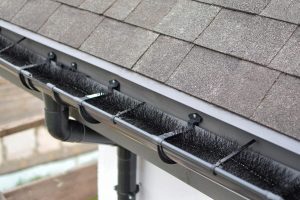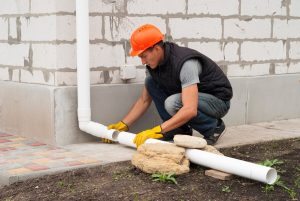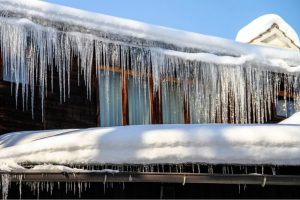Pros and Cons of Replacing or Repairing the Roof During Summer
Jun 15, 2023

If your roof is showing signs of wear and tear, you may be wondering if now is the time to replace or repair it. When is the best time of year to install a roof or repair a roof? The truth is, there is no perfect time to do either one. However, certain times of year may be better than others, depending on your specific situation and on types of roofing services in Hamilton you need.
Along with choosing the right season, it is also important to pick a roofing contractor that you can trust to do the job right. D’Angelo And Sons is a family-owned and operated roofing company that has been servicing the Greater Toronto Area for over 30 years. We are proud to offer our customers honest, reliable and affordable roofing services.
Pros of Roof Repair During Summer
Here are some positives to consider when deciding whether to replace or repair your roof during the summer months:
It’s Quicker
Severe winter conditions can lead to a delay in the delivery of materials and in the job execution. This can cause you to spend more time and money in the long run. Since there’s less chance of delays due to bad weather, roof repairs can be completed more quickly during the summer months. This is especially beneficial if your roof requires urgent repair.
Installation is Easier
It’s easier to replace your roof in dry weather. In cold weather, for instance, the roofing materials can get more brittle and difficult to work with. Along with that, the adhesive that holds the shingles in place may not properly adhere, which can lead to leaks. In the summer months, the heat can also cause the asphalt in shingles to become more pliable, making them easier to work with and less likely to crack.
It’s Cheaper
The price of professional roofing is often a little less in the summer because demand is typically lower. This can save you money on the total cost of the project. In addition, because there’s less likelihood of damage to materials or delays due to bad weather, the overall cost of your roofing replacement or repair may be significantly lower.
Enhances Roof Efficiency During Summer
If your roof is damaged and you leave it unfixed, it may affect the efficiency of your home. Water may enter your property, causing mold and mildew to form. This can lead to expensive repairs down the line. By repairing your roof during the summer, you can avoid these costly issues and keep your home in good condition. Heat will also escape more easily, leaving you with a cold home and higher energy bills. By fixing your roof issues in the warmer months, your house will be safe from water and excessive cold. Your energy bills will also be lower.
Lower Moisture Levels
In the winter months, the humidity in the air, the snow, rain, and ice may all contribute to the moisture levels which can make roofing materials damp and can lead to problems while using them. By repairing or replacing your roof during the summer, you can avoid these issues.
There Are More Roofing Contractors Available
The demand for roofing services is typically lower in the summer. This means that you’ll have more contractors to choose from, giving you more bargaining power when it comes to price. You can also take your time to research different contractors and find one that you trust and feel comfortable working with.
Cons of Roof Repair During Summer
Although there are some advantages to replacing or repairing your roof during the summer months, there are also a few drawbacks to consider:
Harder for Your Roofing Crew
Because your roof can be up to 20 degrees hotter than it is on the ground, working in the heat can be extremely difficult. This is especially so in the peak of summer when temperatures can reach over 30 degrees. It’s important to make sure that your roofing contractor and his team take breaks often to stay hydrated and avoid heat exhaustion.
The Sun Can Damage Materials
If the sun is shining directly on the roofing materials, it can cause them to deteriorate quicker. This is especially true for asphalt shingles. While the heat can make them more pliable, it can also cause them to warp. To avoid this, it’s best to start the project early in the morning or late in the afternoon when the sun isn’t as strong.
Your Roof May be More Susceptible To Leaks
If your roof is already leaking, repairing it during the summer may not be the best idea. The heat can cause the materials to expand and contract, which can make the problem worse. If your roof is leaking and it’s something you can cope with, it may be best to wait until the cooler months to have it repaired.
Having said that, when you have a roofing contractor that has the right equipment and manpower for top-class roofing services, they will be able to work under any condition. With that in mind, the best time to repair or replace your roof is when it’s convenient for you. If you have the time and budget to do so, summer can be a great time to get the job done.
Other Things to Think About
What is The Best Month to Replace a Roof?
The weather is one of the most important factors to consider when deciding whether or not to replace or repair your roof. If it is too hot outside, the heat can cause the shingles to become weak and brittle, making them more susceptible to damage. On the other hand, if it is too cold, the job may be delayed due to bad weather and you may end up with a bigger quote. In the end, the best season to replace your roof will depend on a lot of factors. Generally, Fall is the best time of year to install a roof. The weather is just perfect for both the crew and the roofing materials.
What Is the Busiest Season for Roofers?
While Fall may be the best time of year to replace your roof, it is also the busiest time for roofers. Because of this, you may have a hard time finding a contractor that is available to do the job. To avoid this, it’s best to start looking for a roofing contractor in the summer months.
What Is the Best Temperature to Replace a Roof?
The best temperature to replace a roof is around 45 and 85 degrees Fahrenheit. However, roofers can still replace your roof in hotter or cooler temperatures, it just may be more difficult.
When Should You Not Put a Roof On?
It is advisable not to put a roof on when the temperature drops below 40 degrees or climbs above 85 degrees Fahrenheit.
In the end, it is best to speak with your contractor about when the best time to replace your roof is, as they will be able to consider the weather.
Choose D’Angelo And Sons For All Your Summer Roof Replacement or Repairs
If you’re considering replacing or repairing your roof this summer, be sure to contact D’Angelo And Sons. We have years of experience and are experts in the field. We’ll work with you to ensure that your project is completed on time and within budget. Contact us today at [phone] to get started!





